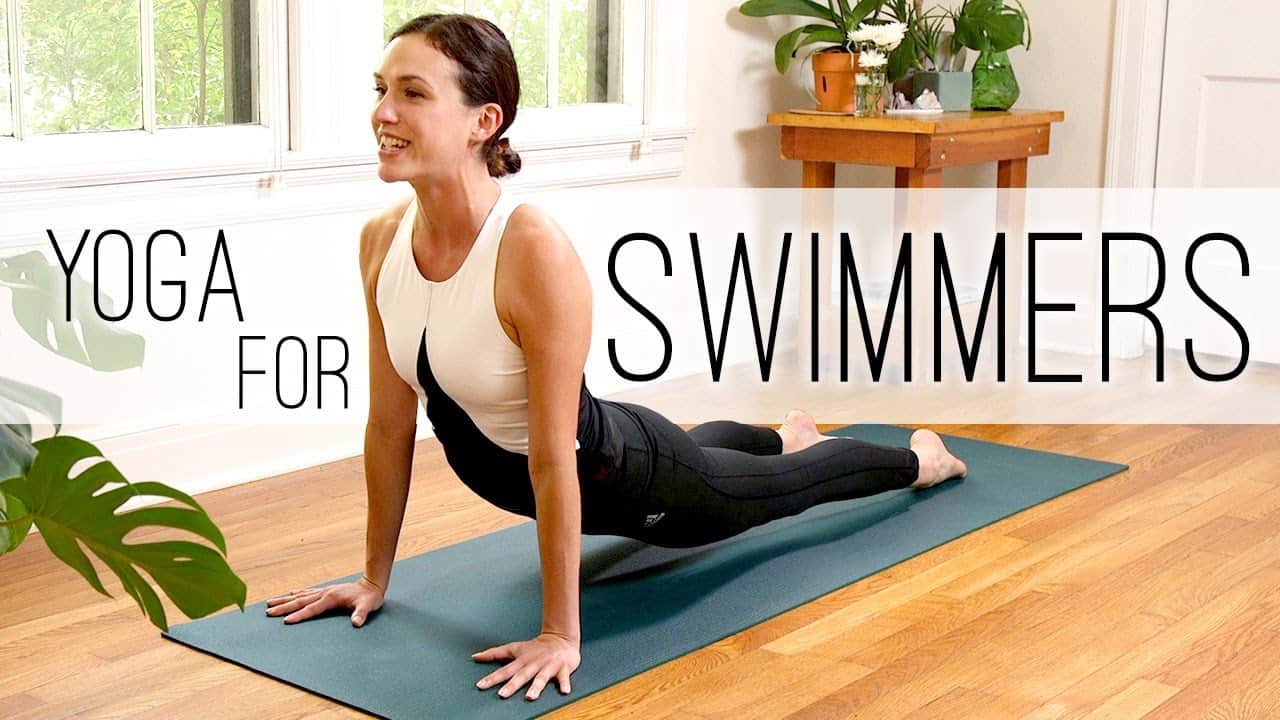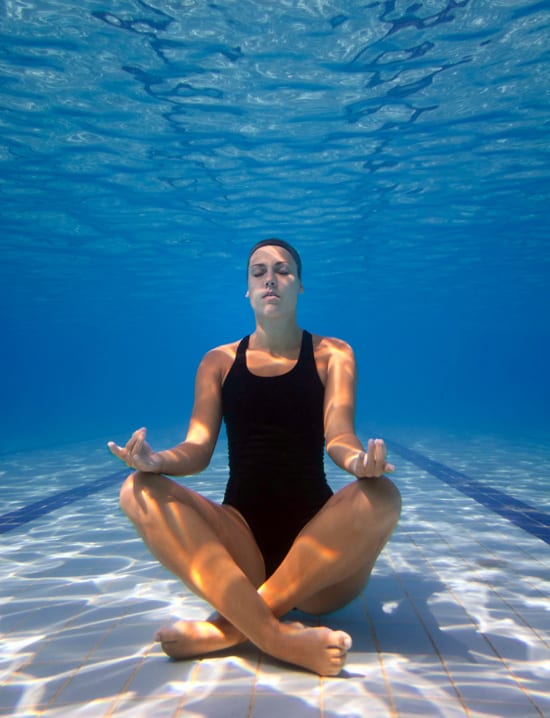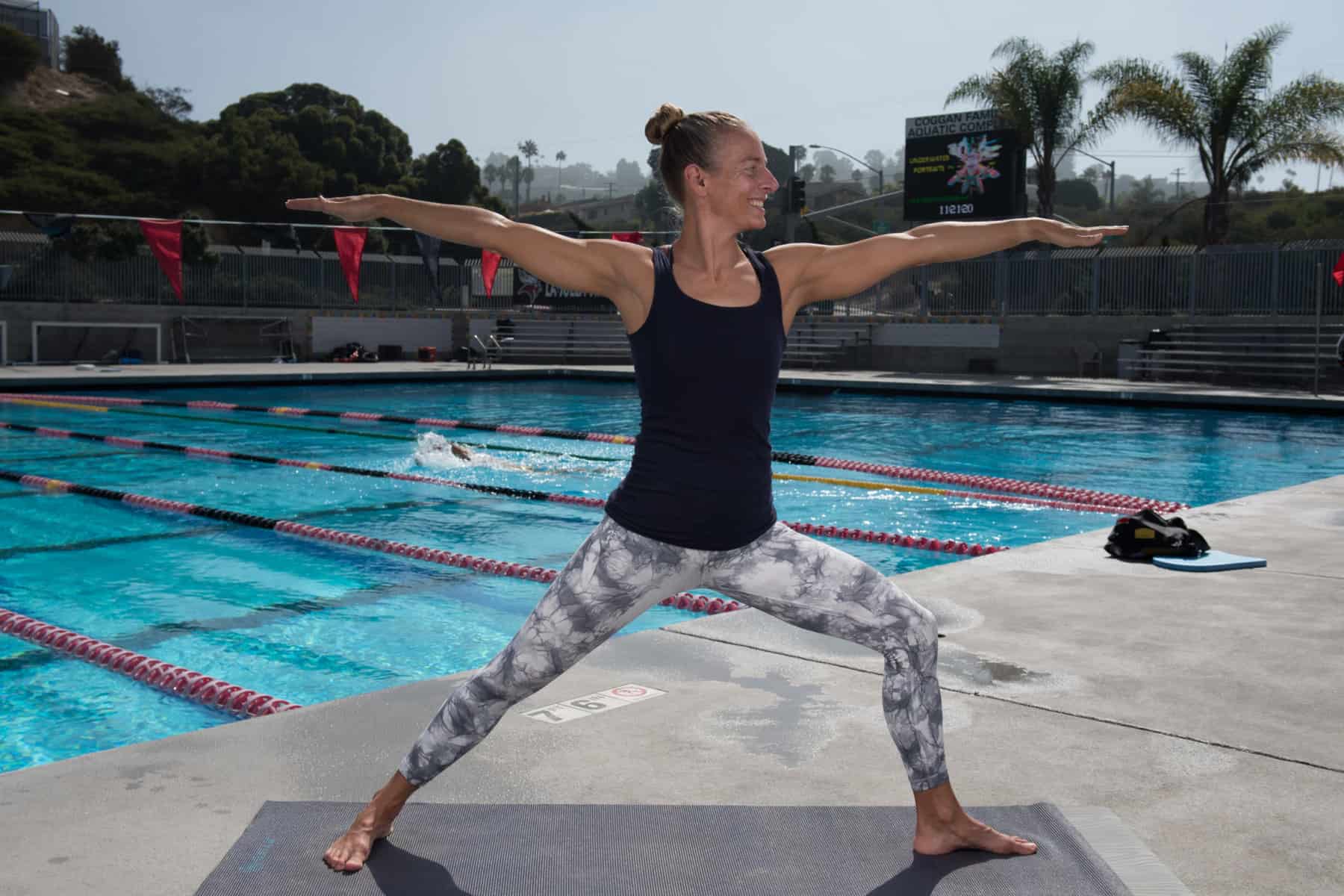Yoga for Swimmers: Yoga offers swimmers targeted poses and breathing techniques to boost flexibility, enhance core strength, improve posture, and promote deep relaxation for optimal performance and recovery.
Unlock Your Potential: Yoga Poses to Enhance Shoulder Flexibility for Swimmers
Shoulder flexibility is crucial for swimmers as it plays a significant role in their performance and overall swimming ability. The shoulders are one of the most important joints used in swimming, as they are responsible for generating power and propelling the body through the water.
Without proper shoulder flexibility, swimmers may experience limitations in their range of motion, which can hinder their ability to execute efficient and powerful strokes.
Having good shoulder flexibility allows swimmers to achieve a full range of motion in their strokes, enabling them to reach further and pull more water with each stroke. This increased range of motion translates into greater propulsion and speed in the water. Additionally, flexible shoulders help swimmers maintain proper body alignment and reduce the risk of injury.
The Anatomy of the Shoulder: Understanding the Joint
The shoulder joint is a complex structure that consists of several bones, muscles, tendons, and ligaments. It is a ball-and-socket joint, where the rounded head of the upper arm bone (humerus) fits into a shallow socket on the shoulder blade (scapula). This design allows for a wide range of motion in the shoulder joint.
During swimming, the shoulder joint works in conjunction with other muscles and joints to execute various strokes. The rotator cuff muscles, which include the supraspinatus, infraspinatus, teres minor, and subscapularis, play a crucial role in stabilizing the shoulder joint and preventing injuries.
Common shoulder injuries in swimmers include rotator cuff tears, impingement syndrome, bursitis, and tendinitis. These injuries can be caused by overuse, improper technique, or lack of shoulder flexibility. It is important for swimmers to understand the anatomy of their shoulders and take steps to maintain flexibility and prevent injuries.
Common Shoulder Injuries in Swimmers
Swimmers are prone to shoulder injuries due to the repetitive nature of their sport and the high demands placed on their shoulders. Overuse injuries, such as rotator cuff tears and tendinitis, are common among swimmers. These injuries can cause pain, limited range of motion, and decreased performance.
Shoulder flexibility plays a crucial role in preventing these injuries. When the shoulders are flexible, the muscles and tendons surrounding the joint can move freely without being strained or overstretched. This reduces the risk of tears, impingement, and inflammation.
Benefits of Yoga for Shoulder Flexibility
Yoga is a highly effective practice for improving shoulder flexibility in swimmers. It combines stretching, strengthening, and relaxation techniques that target the muscles and joints of the shoulders. Regular yoga practice can help swimmers achieve greater range of motion, reduce muscle imbalances, and prevent injuries.
Yoga also promotes body awareness and proper alignment, which are essential for maintaining good shoulder health. By practicing yoga, swimmers can develop a better understanding of their bodies and learn how to move in a way that supports their shoulders.
In addition to improving shoulder flexibility, yoga offers numerous other benefits for swimmers. It helps increase overall strength, balance, and stability, which are essential for maintaining proper body position in the water. Yoga also promotes relaxation and stress reduction, which can improve mental focus and concentration during training and competition.
Yoga Poses for Shoulder Flexibility: Downward-Facing Dog
One of the most effective yoga poses for improving shoulder flexibility is Downward-Facing Dog (Adho Mukha Svanasana). This pose stretches the shoulders, hamstrings, calves, and spine while strengthening the arms and legs.
To practice Downward-Facing Dog:
1. Start on your hands and knees with your wrists directly under your shoulders and your knees under your hips.
2. Spread your fingers wide and press into your palms as you lift your hips up and back.
3. Straighten your legs as much as possible, but keep a slight bend in the knees if needed.
4. Press your heels down towards the mat and lengthen your spine.
5. Relax your head and neck, allowing them to hang freely.
6. Hold the pose for 5-10 breaths, focusing on deepening the stretch in your shoulders with each exhale.
The benefits of Downward-Facing Dog for shoulder flexibility include increased range of motion in the shoulders, improved posture, and strengthened upper body muscles. Regular practice of this pose can help swimmers achieve a more efficient and powerful stroke.
Yoga Poses for Shoulder Flexibility: Puppy Pose
Puppy Pose (Uttana Shishosana) is another excellent yoga pose for improving shoulder flexibility. This pose stretches the shoulders, chest, and spine while opening up the front of the body.
To practice Puppy Pose:
1. Start on your hands and knees with your wrists directly under your shoulders and your knees under your hips.
2. Walk your hands forward, keeping your hips over your knees.
3. Lower your chest towards the mat, allowing your forehead to rest on the floor or a block.
4. Reach your arms forward and press your palms into the mat.
5. Relax your shoulders and allow them to sink towards the floor.
6. Hold the pose for 5-10 breaths, focusing on deepening the stretch in your shoulders with each exhale.
Puppy Pose helps release tension in the shoulders and chest, which can improve shoulder flexibility and range of motion. It also helps lengthen the spine and improve posture, which are important for maintaining proper body alignment in the water.
Yoga Poses for Shoulder Flexibility: Thread the Needle
Thread the Needle (Parsva Balasana) is a gentle yoga pose that targets the shoulders, upper back, and neck. It helps release tension and tightness in the shoulders, improving flexibility and range of motion.
To practice Thread the Needle:
1. Start on your hands and knees with your wrists directly under your shoulders and your knees under your hips.
2. Extend your right arm out to the side and then thread it underneath your left arm, resting your right shoulder and ear on the mat.
3. Walk your left hand forward, extending it as far as possible.
4. Relax your head and neck, allowing them to hang freely.
5. Hold the pose for 5-10 breaths, focusing on deepening the stretch in your right shoulder with each exhale.
6. Repeat on the other side.
Thread the Needle helps release tension in the shoulders and upper back, improving flexibility and range of motion. It also helps relieve stress and promote relaxation, which can be beneficial for swimmers who often experience high levels of physical and mental stress.
Yoga Poses for Shoulder Flexibility: Cow Face Pose
Cow Face Pose (Gomukhasana) is a seated yoga pose that stretches the shoulders, chest, and hips. It helps improve shoulder flexibility and range of motion while also opening up the chest and improving posture.
To practice Cow Face Pose:
1. Sit on the floor with your legs extended in front of you.
2. Bend your right knee and cross it over your left knee, bringing your right foot to the outside of your left hip.
3. Bend your left knee and bring your left foot to the outside of your right hip.
4. Reach your right arm up towards the ceiling, then bend it at the elbow and bring it behind your head.
5. Reach your left arm behind your back and try to clasp your hands together.
6. If you cannot clasp your hands together, use a strap or towel to bridge the gap between your hands.
7. Hold the pose for 5-10 breaths, focusing on deepening the stretch in your shoulders with each exhale.
8. Repeat on the other side.
Cow Face Pose helps stretch and open up the shoulders, improving flexibility and range of motion. It also helps release tension in the hips and lower back, which can be beneficial for swimmers who often experience tightness in these areas.
Yoga Poses for Shoulder Flexibility: Eagle Pose
Eagle Pose (Garudasana) is a standing yoga pose that stretches the shoulders, upper back, and hips. It helps improve shoulder flexibility and range of motion while also strengthening the legs and improving balance.
To practice Eagle Pose:
1. Stand tall with your feet hip-width apart.
2. Bend your knees slightly and lift your right leg, crossing it over your left leg.
3. Hook your right foot behind your left calf if possible.
4. Extend your arms forward at shoulder height, then cross your right arm over your left arm.
5. Bend your elbows and bring your palms together, or if that is not possible, bring the backs of your hands together.
6. Lift your elbows up towards the ceiling and relax your shoulders away from your ears.
7. Hold the pose for 5-10 breaths, focusing on deepening the stretch in your shoulders with each exhale.
8. Repeat on the other side.
Eagle Pose helps stretch and open up the shoulders, improving flexibility and range of motion. It also helps strengthen the legs and improve balance, which are important for maintaining proper body position in the water.
Precautions and Modifications for Swimmers
While yoga can be highly beneficial for swimmers, there are some precautions and modifications that should be taken into consideration to ensure safety and prevent further injury.
Swimmers with existing shoulder injuries should consult with a healthcare professional before starting a yoga practice or attempting any new poses. They may need to modify certain poses or avoid them altogether to prevent aggravating their condition.
It is also important for swimmers to listen to their bodies and not push themselves too hard in yoga practice. Overstretching or forcing the shoulders into positions that are uncomfortable or painful can lead to further injury. Swimmers should focus on gradually increasing their flexibility and range of motion over time, rather than trying to achieve immediate results.
Incorporating Yoga for Shoulder Flexibility into Your Swim Training
Incorporating yoga into swim training can have numerous benefits for swimmers, especially when it comes to improving shoulder flexibility. By practicing yoga regularly, swimmers can increase their range of motion, reduce the risk of injury, and enhance their overall swimming performance.
To incorporate yoga for shoulder flexibility into swim training, swimmers can set aside dedicated time each week for yoga practice. They can also incorporate specific yoga poses for shoulder flexibility into their warm-up and cool-down routines before and after swimming sessions.
In conclusion, shoulder flexibility is crucial for swimmers as it directly impacts their performance and overall swimming ability. Yoga offers a highly effective and accessible way for swimmers to improve shoulder flexibility and prevent injuries. By incorporating yoga into their swim training, swimmers can enhance their range of motion, strengthen their muscles, and achieve greater efficiency and power in the water.
Originally posted 2024-03-09 09:40:26.




